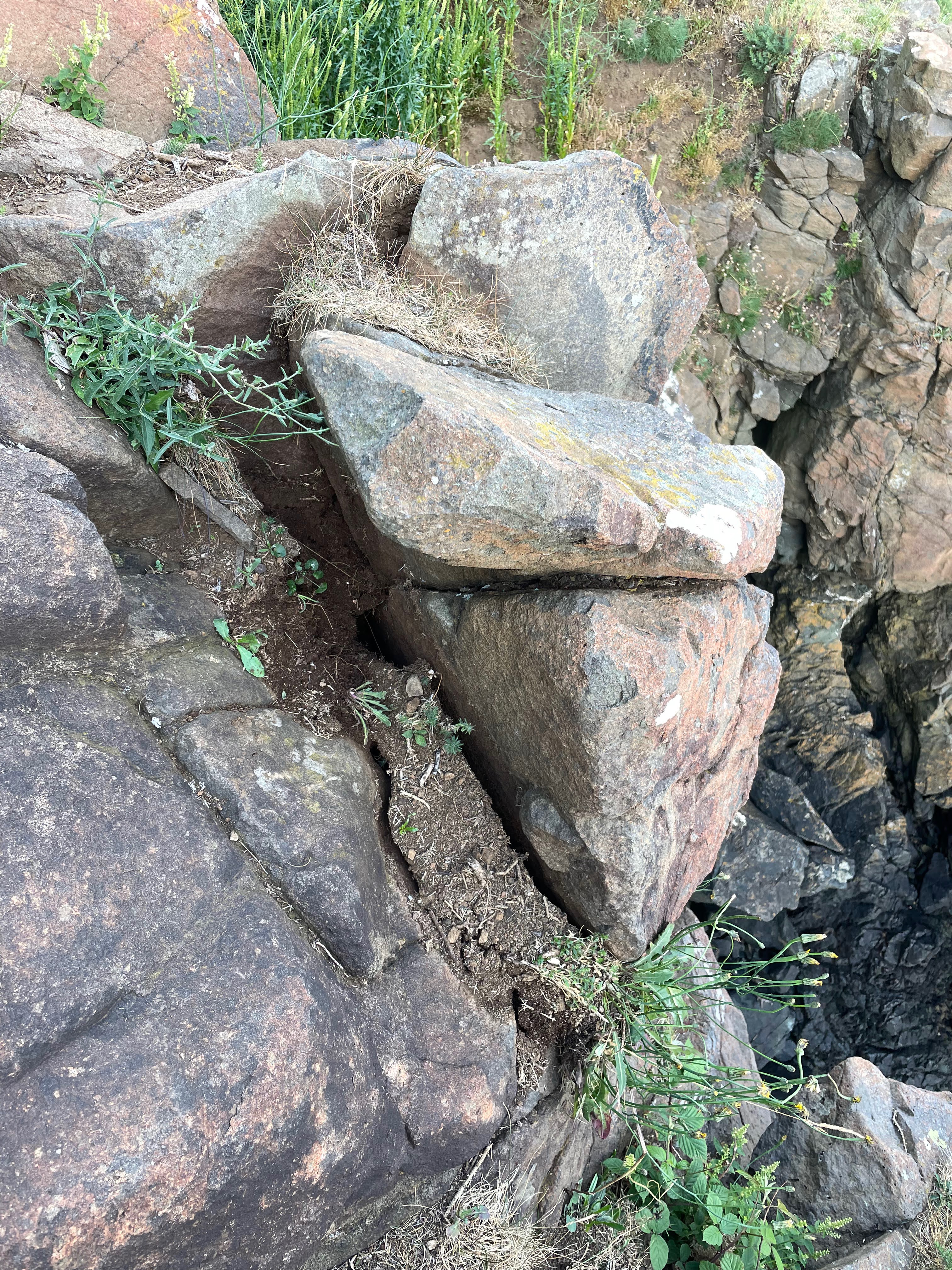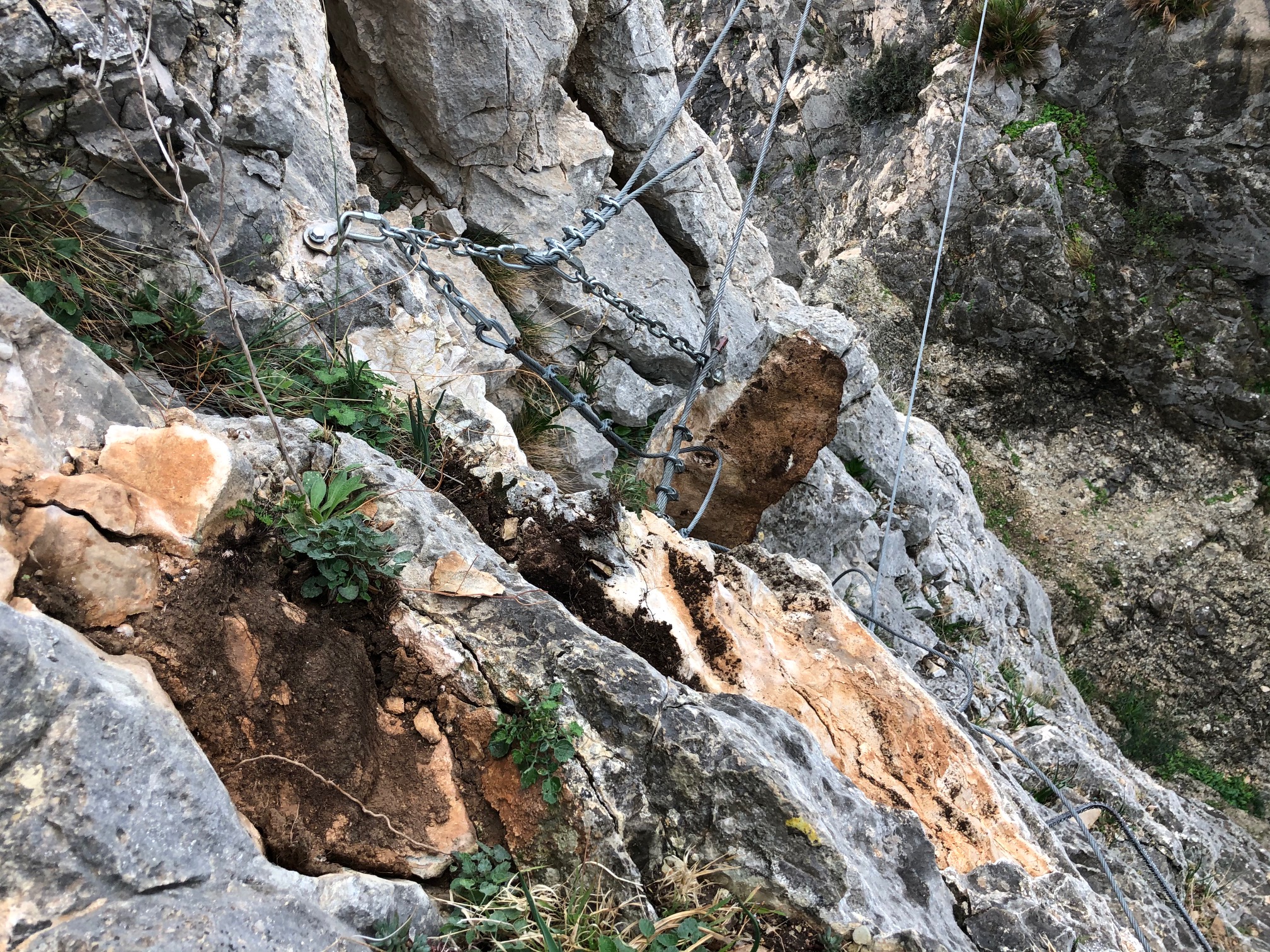Loading...
Activity
Trad rock climbing
When
Descending
Injury
No injury
Incident
Taking a group of competent indoor lead climbers out for their first taste of outdoor rock climbing on easy single-pitch routes on Stanage.
An anchor had been setup to top-rope Youth (VDiff). Weather: stable, cloudy with intermittent bursts of sun, 25mph winds at the anchor, 18C without windchill. The anchor comprised a sling around a small thread to the left of the route finish, and two small nuts grouped to the right, one of which threaded into the crack. The anchor was built as a sliding anchor between the thread and the grouped nuts with limiting knots very close to the master point.
The route then saw multiple top-rope ascents by my group, circa 10 ascents with lowers. It is worth noting a second line had also been setup on the neighbouring Icy Crack (VS) where I had used the same thread again to build the anchor, using another sling.
The final ascent saw climber #1 sim-leading, on a top-top belay from climber #2 and lead-belay from climber #3 to learn how to place gear on their first trad ascent. Rockfax comments noted this route a good First-Trad-route with lots of good gear. Indeed climber #1 did a great clean ascent. Upon getting to the top, climber #3 took climber #1 off lead-belay to be lowered on the top rope. Around 1/3rd of the way down, 2-3m, climber #1 and climber #2 stopped, noting they felt a sudden drop of a few inches.
I told them to stay there as I went up the side to inspect the anchor, I found the thread had failed, with the sliding anchor and limit knots transferring load to the two small nuts. I’d placed. They were holding, so I advised climber #2 to continue the lower slowly, after which I pulled up the rope and dismantled the anchor as judged it not safe enough to continue. No injuries, pictures taken.
Lessons
This highlighted to me the importance of mitigating against of shock-loading. I don’t build sliding anchors very often as I find them slower than tying a large knot. I’m glad I made a point of tying the limiting knots and tying them close to the master point - seeing as the route was straight-up so the master point wouldn’t need to slide much laterally.
I feel the anchor was built well, as upon failure of a single piece, the anchor remained stable and secure.
Improvements:
- using the same thread twice to build separate anchors wasn’t smart, though I did consider it unlikely both routes would have a climbers lowering off simultaneously, I could have advised all climbers in my party to un-tie and descent on foot down the side of the crag to reduce loading on the anchor.
- my judgement on using smaller threads has changed. While this thread did his stain multiple lowers, it did eventually fail.
- I could have advised climber #1 to climb out of the position they were in, taking load off the remaining gear, to mitigate had that gear not been sufficient. However, on reflection, as the remaining gear held despite a small shock-load, it was safe enough to advise a gentle lower of climber #1 to the ground.
Causes
Hold breaking
Anonymous?
No
Reported By
Participant
Wearing Helmets?
Yes
Rescue Services Involved?
No rescue services involved



Author
Ralph Dale
6 June 2025 at 15:17:06
For more advice and guidance on good practices visit BMC skills
All reports are self-submitted and have not been edited by the BMC in any way, so please keep an open mind regarding the lessons and causes of each incident or near-miss.
If you have a concern regarding this report please contact us at incidentreports@thebmc.co.uk